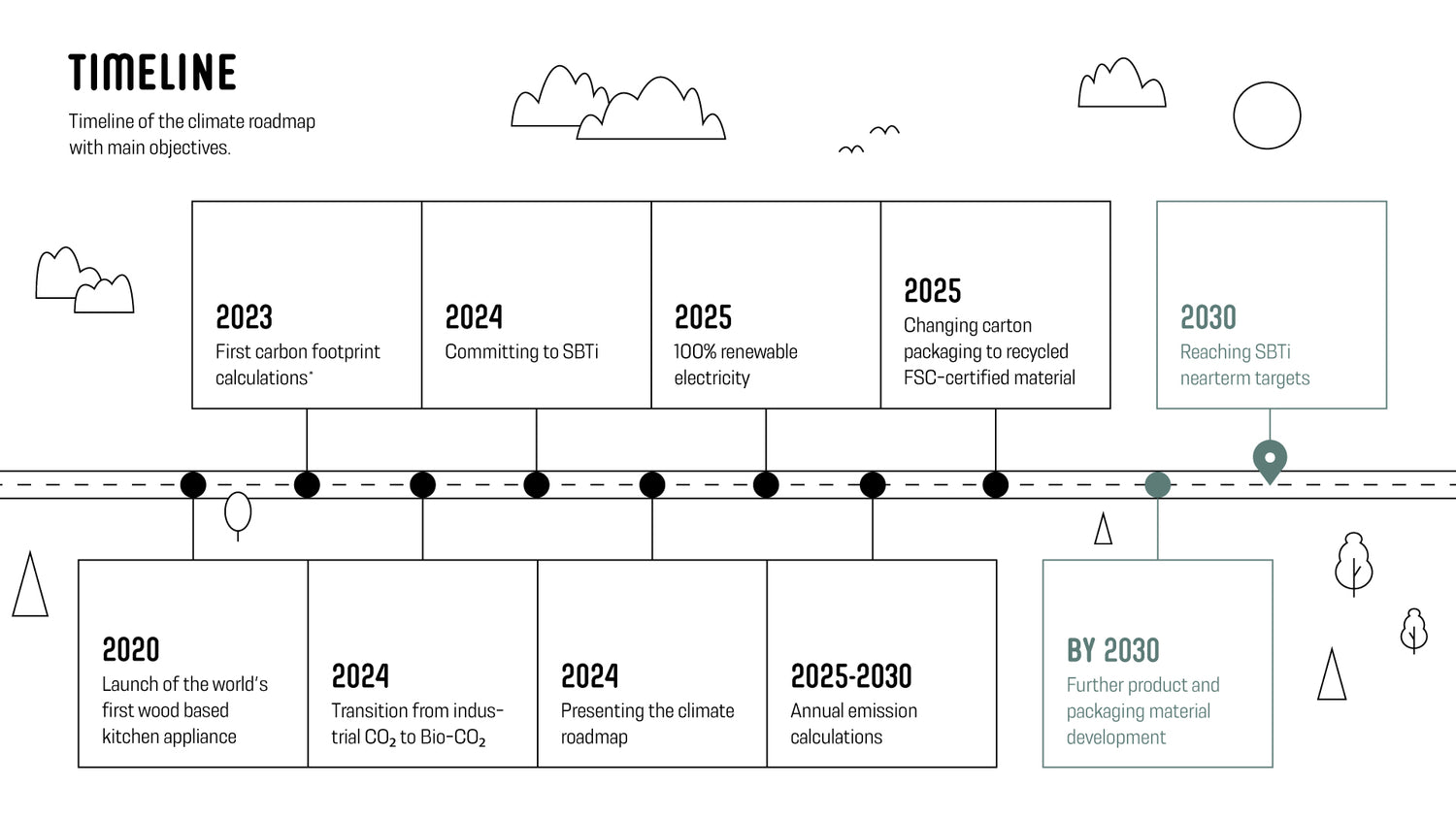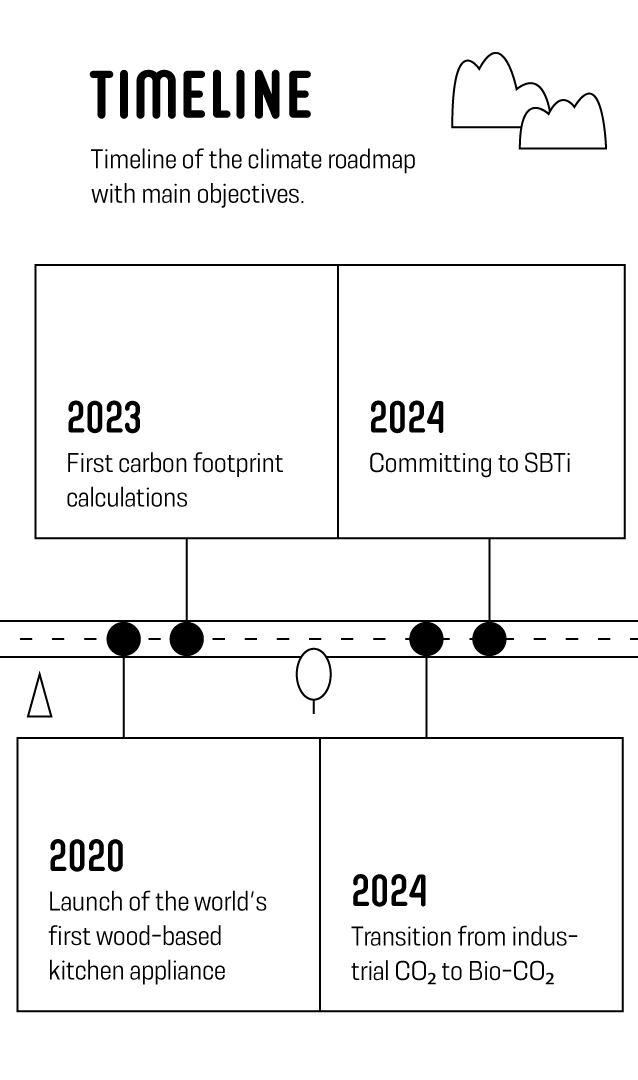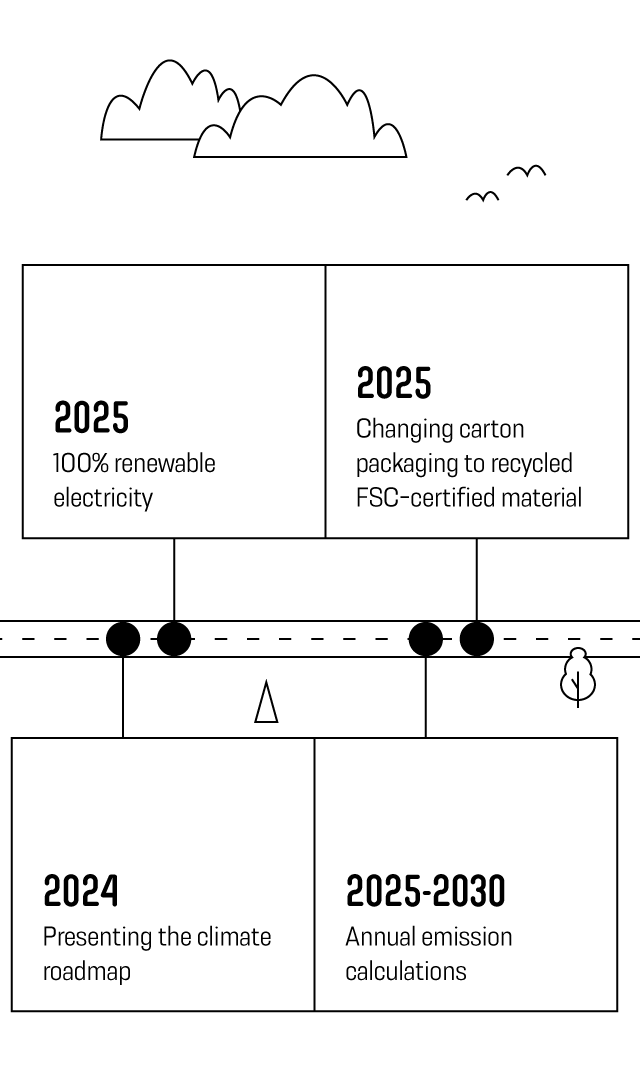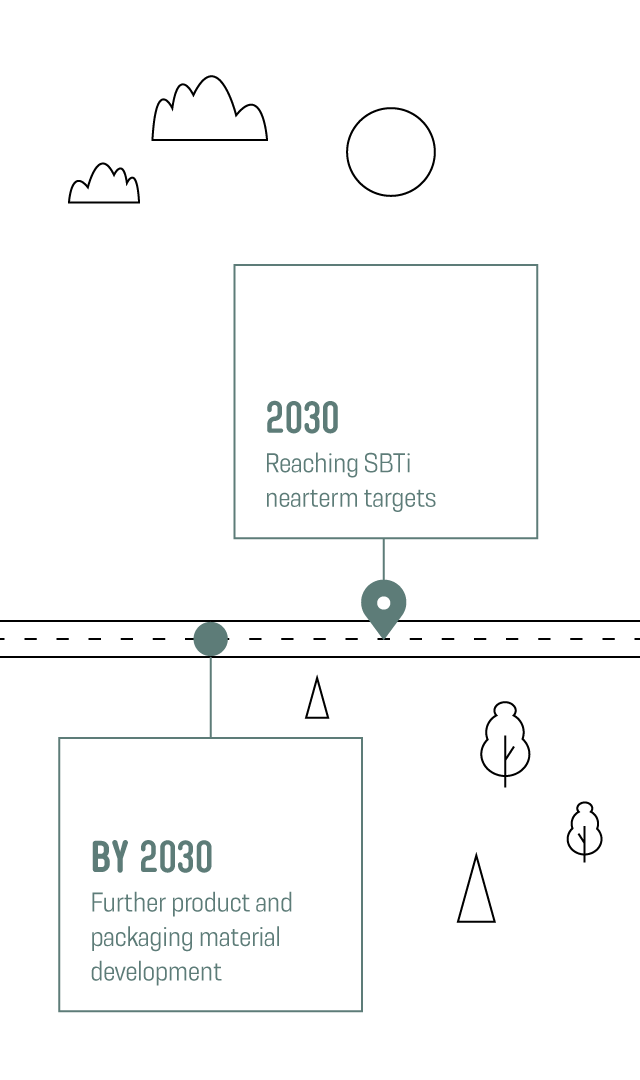
Mysoda's Carbon Inventory

The GHG protocol
The GHG Protocol is the most widely used global framework for calculating carbon footprints.
The calculation can be done at the company
level or for individual products or services. The GHG Protocol is recommended because of the scale of its criteria and its international recognition. The results of the calculations are reported as carbon dioxide equivalents (CO2e), which take into account the different climate-warming effects of various greenhouse gases.
Mysoda’s carbon footprint calculations were conducted in accordance with both the GHG Protocol Corporate Accounting and Reporting Standard and the Corporate Value Chain (Scope 3) Accounting and Reporting Standard.
Carbon footprint of Mysoda Group and our products
To help you assess the carbon footprint of our products and Mysoda as a whole whe have summarized the information in charts. Carbon footprint information for specific products has been added to the product pages in the form of these charts. You can also use the selector on the lower chart on this page to access information regarding the product you are interested in. If you are comparing emissions of products from different companies, keep in mind that emissions can be calculated at a superficial level or in great detail and not all emissions figurescomprise the same scope. We report emissions on the most comprehensive level, i.e. cradle-to-grave emissions for products and Scope 1, 2 and 3 emissions on group level. That means the numbers you find on this page cover all steps from the production of a product through transportation and use right to the end of it's livespan with final recycling. Group level emissions include both direct greenhouse gas emissions from sources owned or controlled by the Mysoda and indirect greenhouse gas emissions occuring throughout our value chain.
Greenhouse gas emissions throughout Mysoda Group 2022
7024 t CO2E
Greenhouse gas emissions by product
0 kg CO2E

Social matters matter
Supplier compliance – A member of Amfori BSCI
We are committed to ethical business practices and taking responsibility for our social impact. That is why Mysoda is a member of Amfori BSCI and commits to it's code of conduct. Amfori BSCI (Business Social Compliance Initiative) is a leading supply chain management system designed to support companies in improving social performance in their global supply chain. Members of Amfori BSCI are committed to enhancing working conditions in their supply chain by implementing the Amfori BSCI Code of Conduct, which includes principles related to labour rights, health and safety, and environmental protection.
The Amfori BSCI Code of Conduct is based on international labour standards which, among others, include principles related to health and safety, collective bargaining rights, fair remuneration, protection from discrimination and child labour, and decent working hours. Amfori BSCI members commit to ethical sourcing practices and socially responsible business.




